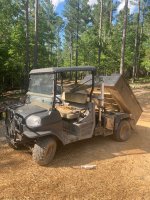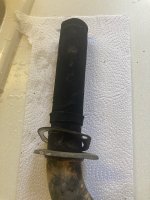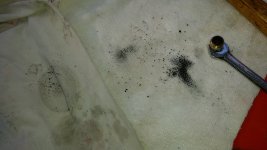Smokeydog
Elite Member
Interested how folks are cleaning their spark arrester mufflers Owners manual says every 250 hours.
2016 B26 has a simple cone screen attached to the tailpipe with one screw. Cleaned it a couple of times. The screen being about 20-30% plugged. The screen was an option (~$70) and I guess was required in some USDA Forrest dry fire prone areas. At 400hrs decided to leave it off. Did attach a short piece of tail pipe to let the exhaust better clear the tractor.
2013 M59. Manual gives two options to clean/service internal spark arrester.
A) Remove cleanout plug, use industrial vacuum, use sympathetic vibration (hammer without damage) to remove soot, condensate, oil.
B) Remove muffler and beat (gently) the soot out. Hope this is not the preferred method for these tractors.
Tractor has 1300hrs and pretty sure none of this maintenance has ever been done. Runs fine. I’m guessing blockage would reduce power. How much stuff comes out?
2016 B26 has a simple cone screen attached to the tailpipe with one screw. Cleaned it a couple of times. The screen being about 20-30% plugged. The screen was an option (~$70) and I guess was required in some USDA Forrest dry fire prone areas. At 400hrs decided to leave it off. Did attach a short piece of tail pipe to let the exhaust better clear the tractor.
2013 M59. Manual gives two options to clean/service internal spark arrester.
A) Remove cleanout plug, use industrial vacuum, use sympathetic vibration (hammer without damage) to remove soot, condensate, oil.
B) Remove muffler and beat (gently) the soot out. Hope this is not the preferred method for these tractors.
Tractor has 1300hrs and pretty sure none of this maintenance has ever been done. Runs fine. I’m guessing blockage would reduce power. How much stuff comes out?
Last edited:



